Showing 61–70 of 125 results

Kantha the embroidered poetry on cloth speaks volumes about the imagination of a woman and the aspirations that her craftwork reflects. This folk art emerged from a combination of materialistic circumstances and daily needs, climate, geography and economic factors. The motifs embroidered were influenced by religious beliefs and superstitions, and of course what the women saw around them.
Kantha the embroidered poetry on cloth speaks volumes about the imagination of Bengali women and the aspirations that her craftwork reflects. It is a well-conceived art work, which has always attracted people from all walks of life. She creates the most amazing Kanthas with great love and affection for her dear ones. Her creativity stands unmatched when she breathes life into a discarded saree, worn out from constant use and laundering. She transforms this simple five metres of old cloth into a most admirable, attractive and unparalleled utilitarian artefact. Initially, light coverlets or quilts to withstand the mild winters and cool monsoon nights of Bengal – were made using the Kantha embroideries, which was limited to simple stitches and a few colours. Some Kanthas were used as swaddling clothes for babies; expectant mothers spent their last stages of pregnancy in making a Kantha for the new born, with the belief that this piece of cloth would bring good fortune for the family and protect the baby from diseases. Every home in a Bengali village housed a number of Kanthas that were more for personal use than commercial gain. This folk art emerged from a combination of materialistic circumstances and daily needs, climate, geography and economic factors. The motifs embroidered were influenced by religious beliefs and superstitions, and of course what the women saw around them. These motifs embroidered in the simplest of running stitches, speak of folk beliefs and practices, religious ideas, themes and characters from mythology and epics, flora, fauna, man and nature; they also reflect the social and personal life of people in their own way.
Kantha signifies a poor man’s wrap consisting of old used up cloth patched up and sewn into a single garment. It seems probable that patch works Kantha constituted the original form of Kanthas and that Kanthas of a decorative appliqué type were evolved from this.
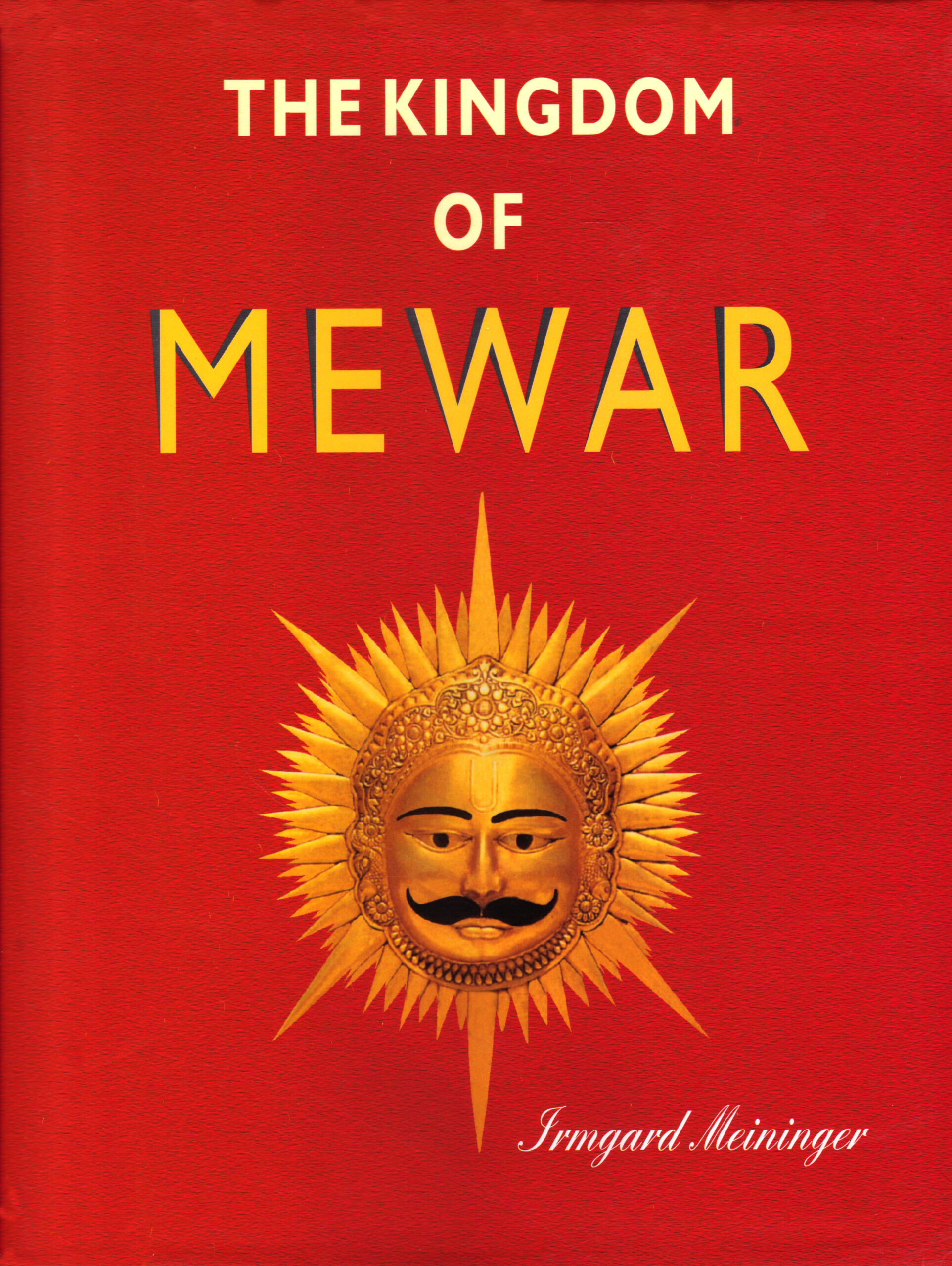
Supported by beautiful illustrations, the study reconstructs the glorious history of the Rajput house of Mewar, perhaps the worlds oldest ruling family. It recounts its heroic battlefield engagements and examines its artistic and literary achievements.
A Premier princely state of Rajsthan, the erstwhile Rajputana (northwest India), till its merger into the Union territory in 1948, Mewar has been celebrated in history and legend. In this far-famed region are best represented not only the Rajput chivalry and high sense of honour, but also their arts, architecture, and fabulous cultural traditions. Developed from the authors four-year long intensive research, the book tries to reconstruct the unparalleled, glorious history of (perhaps) the worlds oldest ruling family: the house of Mewar now called the clan of Sisodias, in earliest times Guhilots. Tracing chronologically the entire course of events since their first known ancestor, Guhil (ad 566), Irmgard Meininger here unfolds a compelling story of brave Rajput men and women, with an exaggerated sense of honour, pride and independence the story of their triumphs and tragedies, and simultaneously of palace intrigues and rivalries, and of supreme sacrifies and treacheries. And yet, in the main, it is an exciting story of Mewars heroic resistance: first to Afghan/Arab adventures and Delhi Sultans and, in the later days, to the Mughal imperialists. Weaving into her narrative the legendary episodes around Maharani Padminis fabulous beauty, the dread rite jauhar, Panna Dais unique loyalty, and Princess Miras bhakti, among others, the author also attempts to show how Mewar has been the repository not only of old Hindu traditions, but of the enchanting Rajput culture as well, and how Rajputs, notwithstanding their endless engagements in the battlefield, were great patrons of art, architecture, literature and music. Supported by numerous beautiful illustrations, bibliographic references and a glossary of non-English words, the book will fascinate anyone interested in India, particularly Rajasthan: whether as an inquisitive reader, tourist, hostorian, or a connoisseur of art.
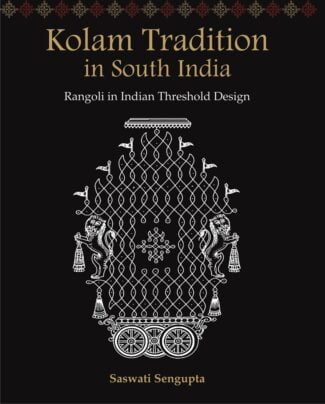
Kolam is propitious threshold drawings by women defining religious and cultural space in South India. Integrating the entire Tamil community in kinship, ephemeral kolam structure is precise and beautiful prayer for protection and prosperity. Aesthetic experience of kolam is in its symmetrical composition that correlates with our concept of the cosmos.
Kolam is propitious threshold drawings by women defining religious and cultural space in South India. Integrating the entire Tamil community in kinship, ephemeral kolam structure is precise and beautiful prayer for protection and prosperity. Aesthetic experience of kolam is in its symmetrical composition that correlates with our concept of the cosmos. In the geometric grid of kolam the number of dots called pulli algorithmically guides the number of crossings that requires overall smoothening of edges in the design. Large number of infinite knot pattern follows a set of elegant mathematical rules that is at the same time artistic. According to Marcia Ascher, Emeritus Professor of Mathematics at Ithaca College, the Principles of Numbers in kolam is dynamics and motion in matter demonstrating multiplicity of the void. Kolam drawings trace unilinear path with singular regularity expressive of polyrhythmic music. Dancer Chandralekha observed that kolam is a kind of yoga. Kolam as an art form has entered computer graphics, ethnomathematics and ethnomusicology, textile industry, therapeutic applications and tactile spatial education for visually challenged. The pervasive threshold drawing of Tamil Nadu are unique but at the same time kolam is extendable to the tradition of tracing patterns in sand produced by several cultures in Africa and South Pacific islands as well as to the brilliant mosaics of ancient Rome.

On the UNESCO List of World Heritage Sites, The Sun Temple of Konarka in Orissa represents the unique beauty and harmony of architecture and sculpture combined. The splendid photographs of the renowned Japanese photographer Oki Morihiro provides both, a visual delight and a scholarly insight and introduction to this great monument of Orissa.
One of the greatest treasures of Indian Temple architecture and on the UNESCO List of World Heritage Sites, The Sun Temple of Konarka on the East coast of Orissa stands as a witness to the cult of Surya. Even in its dilapidated condition it represents the unique beauty and harmony of architecture and sculpture combined. The present book attempts a fresh approach in understanding its symbolism. The splendid photographs of the renowned Japanese photographer Oki Morihiro bring out the grandeur of the conception of the chariot of the Sun God, and the excellence of its sculptures with delightful details. The volume is introduced by two scholars in the fields of Orissan temple architecture and archaeology. Bettina Bäumer in her introduction approaches the temple with a new interpretation, based on the Saura, Vedic and Tantric traditions, throwing light on its symbolism and its mystical dimension. M.A. Konishi places the temple in its historical and geographical context and its importance as a World Heritage. The book provides both, a visual delight by the excellent photographs, and a scholarly insight and introduction to this great monument of Orissa. It can well serve as a guide to understanding and appreciating the temple of Konarka.

The romantic Krishna finds a textual presence for the first time in the Bhagavata Purana and then for a thousand years we celebrate that Krishna through heart-throbbing poetry. Krishna is indeed both the kavi and the kavya, rasa and rasika, the shabda and the artha, He is Purusha and Prakriti.
The romantic Krishna finds a textual presence for the first time in the Bhagavata Purana and then for a thousand years we celebrate that Krishna through heart-throbbing poetry. Krishna is indeed both the kavi and the kavya, rasa and rasika, the shabda and the artha, He is Purusha and Prakriti. Krishna dances and frolics, speaks and sings, and shringara in its many colours comes alive for us through kavya. We are the gopis of Vrindavana, the nayikas of Ritikavya as Krishna comes alive not through religious rites and rituals but through the joy of poetry and painting and we acdaim krishna svayamkavyam.
After we have experienced the aesthetic pleasure of the love of Krishna we realize that all love in this world is that of Krishna, the hushed words of romance between a man and a woman are those of Krishna and Radha, all poetry that celebrates romantic love is that of Krishna, so that we can turn the sentence around and say kavyam svayam krishna.
We invite you to immerse yourself in the beautiful poetry of Krishna, through the melody and lyrics let His madhurya wash over you like the waves of the Yamuna and his many-splendoured persona make your mind dance like the birds and blossoms of Vrindavana.
Harsha V. Dehejia beautifully weaves a tapestry of Krishna Shringara Kavya enriched by the colours and textures of paintingsby the noted artist Vijay Sharma.
The book assures the r eader both the joy of poetry and the visual delight of painting.
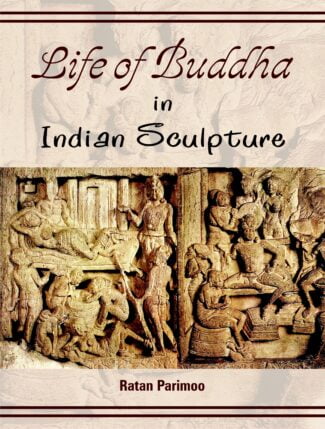
The book traces the beginning of narrative compositions in reliefs depicting the life of the Buddha and analyzes these sculptural depictions of events relating them to biographical texts on him. Supported by over 210 illustrations including drawings and photographs, the work reveals the process of symbolization in visual forms and participation of the sculptors in the process.
The life of the Buddha has been a great source of perennial inspiration to scholars, artists and poets since the early times. Many events from the life of the Buddha have inspired some of the greatest relief compositions in Indian art, which have been depicted in sculptures and monuments.
Tracing the beginning of narrative compositions in reliefs delineating the life of the Buddha, the book analyzes these sculptural depictions of events in the context of several biographical texts on him. The episodes represent the Buddhas birth, enlightenment, first sermon and miracle at Shravasti, descent from Tuùita heaven, subduing of Nalagiri, culminating with mahaparinirvana. The book explores how some of Buddhas basic teachings are linked with certain specific episodes of his life. It highlights the difference between representations of the same events by artists at various periods and places and the differences between the textual description and its sculptural counterpart. It also undertakes a survey of the inspiration provided by the theme of the Buddhas life to devotees and artists in other Asian countries as revealed in their iconography and sculpture.
Supported by over 210 illustrations including drawings and photographs, it reveals the process of symbolization in visual forms and participation of the sculptors in the process. It shows that the sculptural reliefs provide a fascinating insight into the creative mind of the Indian artist: how he invented visual devices and integrated them into the formal structure and the story content and imparted meanings in each sculptural relief. The volume will be essential reading for students and scholars of art history and Buddhist art in particular.
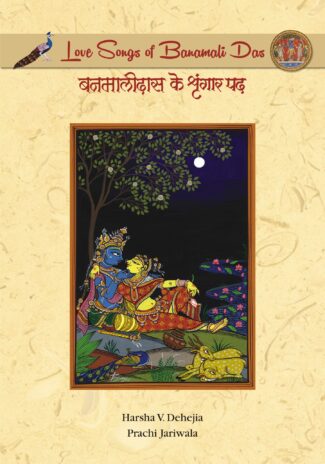
This volume, while discussing the poetic genius of Banamali, portrays the varied forms of pata paintings, associated with the painters of Puri. Though the Rasalila of Krishna and the gopis is their favourite, the topic of dashavatara is very common in pata painting, displaying a special liking for navagunjara painting.
The heart of Odishan arts lies in the villages of Odisha. The songs and dances, the wall paintings and patachitras, fabrics and textiles, all are rooted in the rural sensibility of Odisha. When its people sing the love songs of Krishna or paint his leelas and kridas, they recreate Vrindavana in their on village square. Krishna sharingara reflects and echoes in each leaf and flower, and song and dance of Odisha. It is more vibrant in the verses of the eighteenth century Banamali Das, who wrote a moving Krishna poetry. He celebrated the many leelas and kridas of Krishna and in doing so he experiences every hue and shade of Krishna shringara. He reminds one of the works of Jayadeva and Vidyapati, and enters the mind and heart of Radha more than any other poet. Grounded on the theology of Chaitanya, he bountifully uses words such as ujjala rasa, mohajana and ashta sakhi, firmly establishing him as part of the Gaudiya tradition.
This volume, while discussing the poetic genius of Banamali, portrays the varied forms of pata paintings, associated with the painters of Puri. Though the Rasalila of Krishna and the gopis is their favourite, the topic of dashavatara is very common in pata painting, displaying a special liking for navagunjara painting. It also contains a conversation with Sujata Mohapatra, an accomplished Odissi dancer, who dances to the compositions of Banamali Das.
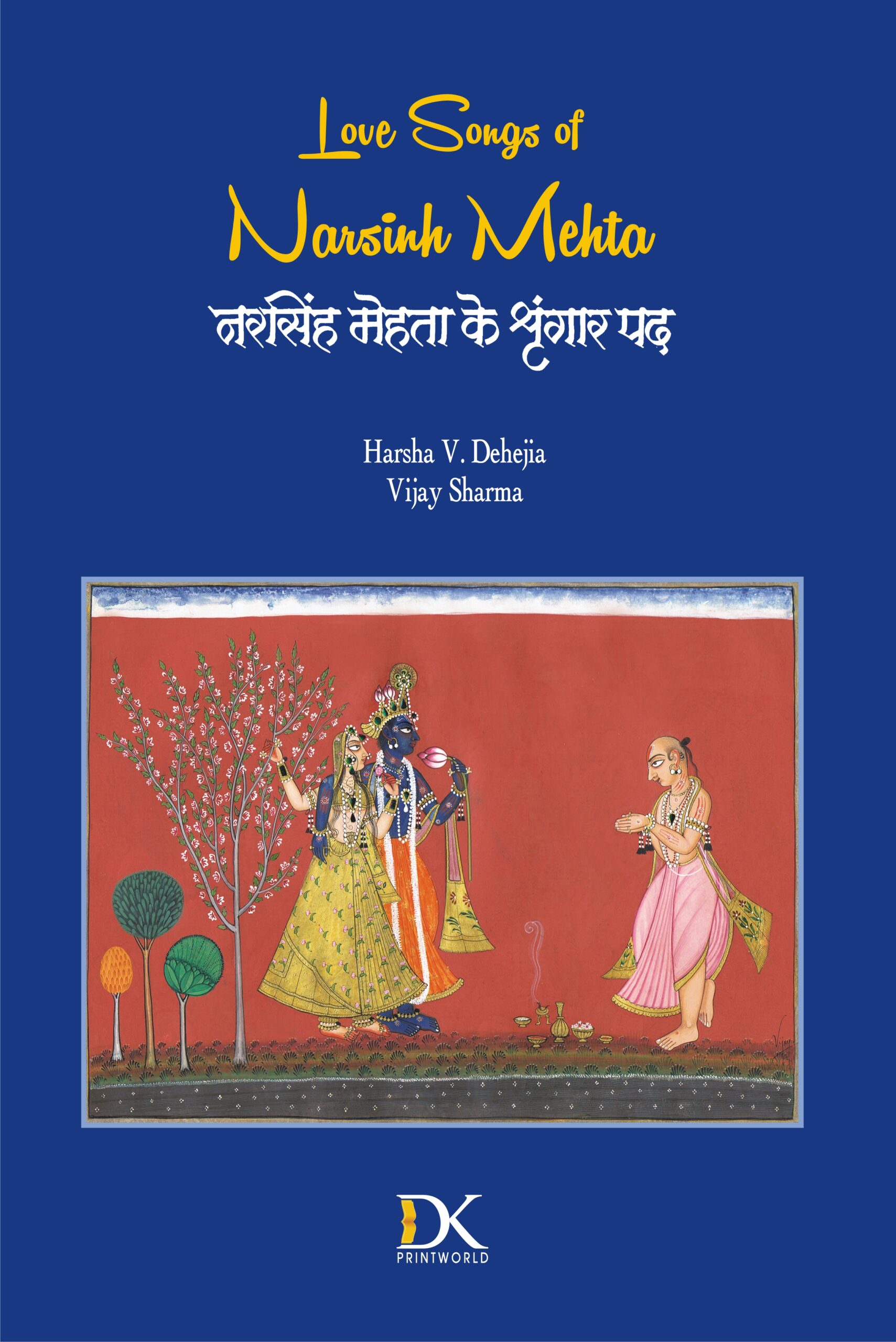
Love Songs of Narsinh Mehta is a commentary on the love songs of Narsinh, adi-kavi of Gujarat. Narsinh sings the glory of Krishna in total devotion as if Krishna is sitting in front of him. For him, Krishna is divine and human, both at the same time. Being Krishnas love, he brings in all emotions and cues of devotional love to his poetry.
Love Songs of Narsinh Mehta is a commentary on Narsinh Mehtas love songs. Narsinh (1408-65), a Vaishnava bhakti poet of medieval India, is considered as the adi-kavi of Gujarat. He is also regarded as a shringara kavi, a poet of romance. The quintessence of his bhakti is prem and his prem has inherent bhakti, and therefore his poetry is regarded as shringara bhakti kavya. Essentially shringara is the romantic celebration of the other, and when Narsinh’s other is none other than Krishna, his shringara kavya becomes Krishna bhakti, where Krishna is both divine and human, at the same time. Singing for Krishna, Narsinh celebrates his swami through amorous verses and divine surrender like Jayadeva.
He sat in a temple and relentlessly sang for his Lord, living through absolute poverty. Nothing made him more jovial than singing the glory of his Krishna. The only man for Narsinh is Krishna, and for the latter Narsinh is a woman at heart. Narsinh, through his songs, brings in the cue of all romantic feelings and moments, recreates the idyllic Vrindavana in ones mind, and he returns that Vrindavana a Vaikuntha with the footfalls of his Krishna.
Through this commentary, the author Harsha V. Dehejia introduces one to the fullness of Narsinhs poems, thereby making one known to Narsinh in and out.

Love Songs of Rasakhan is one among the numerous works of medieval Muslim Vaishnava poets. His original name was Said Ibrahim. On seeing a picture of Shrinathji, Said Ibrahim instantly fell in love with Krishna. His love for Krishna made him yearn for a vision of Krishna.
Love Songs of Rasakhan is one among the numerous works of medieval Muslim Vaishnava poets. A sixteenth-century poet, Rasakhan was born in a Pathan Muslim family at Pihani in Uttar Pradesh. His original name was Said Ibrahim. On seeing a picture of Shrinathji, Said Ibrahim instantly fell in love with Krishna. His love for Krishna made him yearn for a vision of Krishna. He stayed with Krishna devotees in Braj, but could not get a vision of Krishna. He unsuccessfully tried his luck at the Gopalpura Shrinathji Temple and finally went to Govindkund and lay there three days without food and water. Pleased, Shrinathji gave him darshan and this made him to move on the Pushtimarg with the guidance of Gosain Vittalnath.
He spent his entire life in Brij composing songs of the many lilas of Radha and Krishna with the pen-name, Rasakhan. Touched by the sensuality of the love of Radha and Krishna, he produced many mellifluous and melodic songs, celebrating their love.
Other than his poetic genuis, this bilingual illustrated volume contains the stories of 252 Vaishnavas, articles on Rasakhan: A Poet and His Poetry; Medieval Muslim Vaishnava Poets; Rasakhan and the Fluidity of Identity; The Mind of Rasakhan; Muslim Vaishnavas of Bengal; and Poets, Painters & Patrons, being Krishnalal Sharma; Narmada Prasad Upadhyaya; Vidya Rao; Harsha V. Dehejia; Sumanta Banerji; and Harsha V. Dehejia as respective authors.
| There are no products |